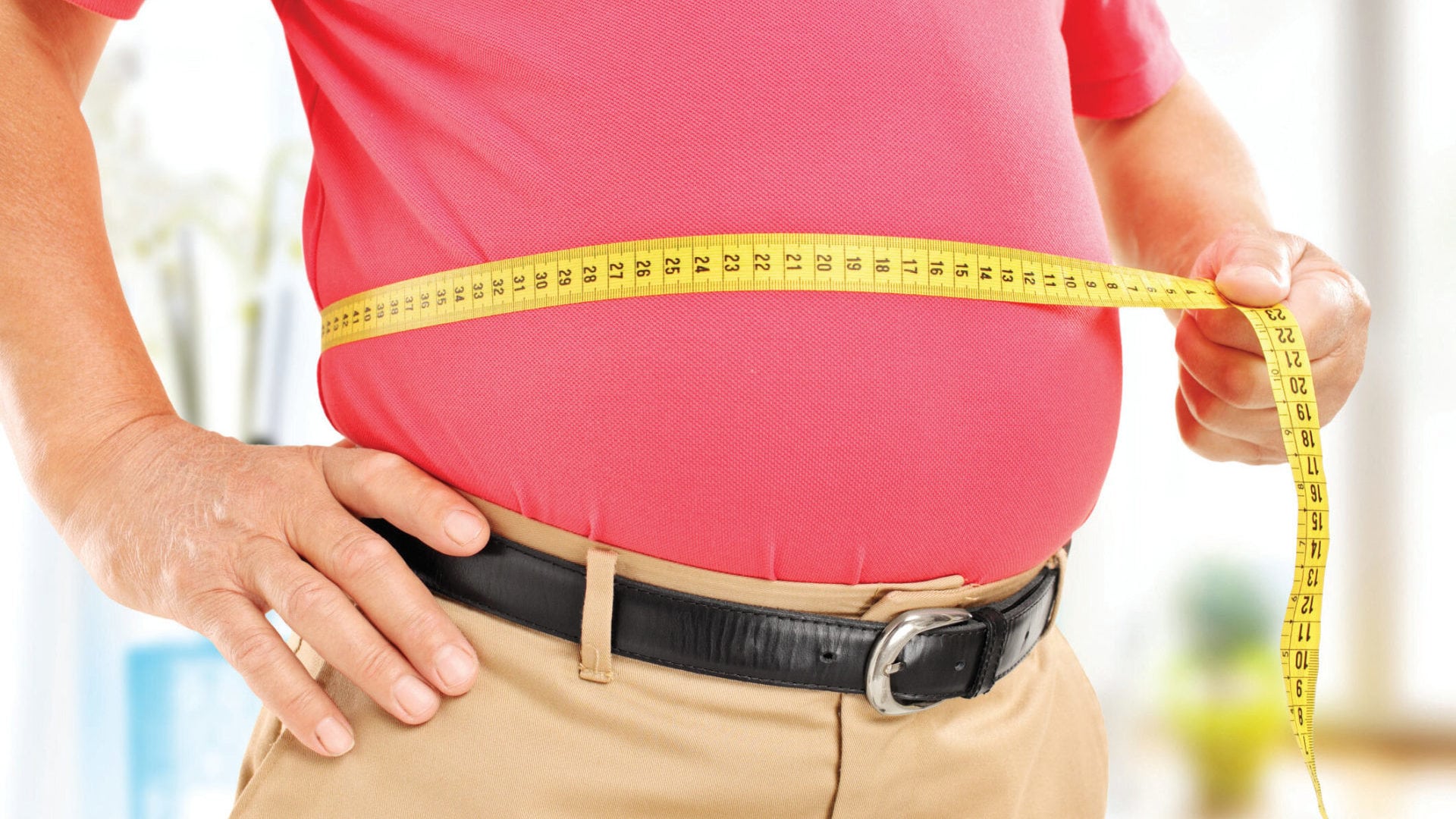
Q: My wife “nags” me about my oversized belly, but I have 19 percent body fat! Isn’t that supposed to be good?
A: Your body fat percentage is within the healthy (6 to 24 percent) range for men,1 but you may still be at risk related to body fat because of your waist size, an external indicator of excess fat around your internal organs. A man’s waist size of 40 inches or more (36 inches or more for Asian men)2 is the healthy cutoff point. If that’s the case with you, your wife’s concerns are warranted. Measuring only your body-fat percentage doesn’t adequately reflect your risk.
Body fat is found under the skin (subcutaneous fat), around internal organs (visceral fat), within and between muscles, in the bone marrow, and in breast tissue. It’s not just padding; it’s actually an important endocrine organ involved in regulating temperature, sex hormones, blood pressure, appetite, blood clotting, sensitivity to insulin’s effects, and even inflammation. So too much or too little can pose a problem.
The terms “white,” “brown,” and “beige” fatty tissue have no association with skin color or ethnicity. White fat, the major component in our body’s fat stores, insulates the body and produces hormones; we can’t live without a small amount of it (3 percent of body weight for men; 12 percent for women). Brown fat, or “baby fat,” consumes calories to produce heat, so God gave babies about 5 percent of their body weight in this variety. A small amount persists in the neck, shoulder, and upper-chest areas in adults. Beige fat is intermediate between white and brown fat. Because brown and beige fats burn calories, their accumulation may help prevent obesity. Spending time in chilly (less than 66°F, or 19°C) environments may increase their accumulation.
Where the fat accumulates also affects health risk. Under-skin fat poses less danger than internal (visceral) fat, which is estimated by measuring waist size, waist-hip and waist-height ratios, and BMI. With age, as testosterone and estrogen decrease, belly fat increases and directly correlates with higher total cholesterol and LDL (bad) cholesterol, lower HDL (good) cholesterol, and insulin resistance. Visceral fat deposits disrupt the balance and functioning of certain hormones, increasing the risk of heart disease, gallbladder disease, type 2 diabetes, and cancer.
Just as a family history of tubby tummies, sedentarism, inadequate sleep, menopause, overeating, high stress, and some medications favor belly-fat accumulation, other factors reduce it. We suggest daily, moderate-intensity, mixed exercise for 30 to 60 minutes; adequate nightly sleep; effective stress management; and avoiding snacking, sweeteners, and alcohol.
Prayer and trust in God will help you manage stress. Intermittent fasting is helpful, but replacing processed and ultra-processed foods with whole plant food is essential. Sit-ups can tighten abdominal muscles but don’t decrease the fat.
We hope you better appreciate your wife’s point of view and thank her for her “persistence.”
1 The healthy range for women is 14 to 31 percent.
2 For women in general it’s 35 inches. For Asian women it’s 32 inches.